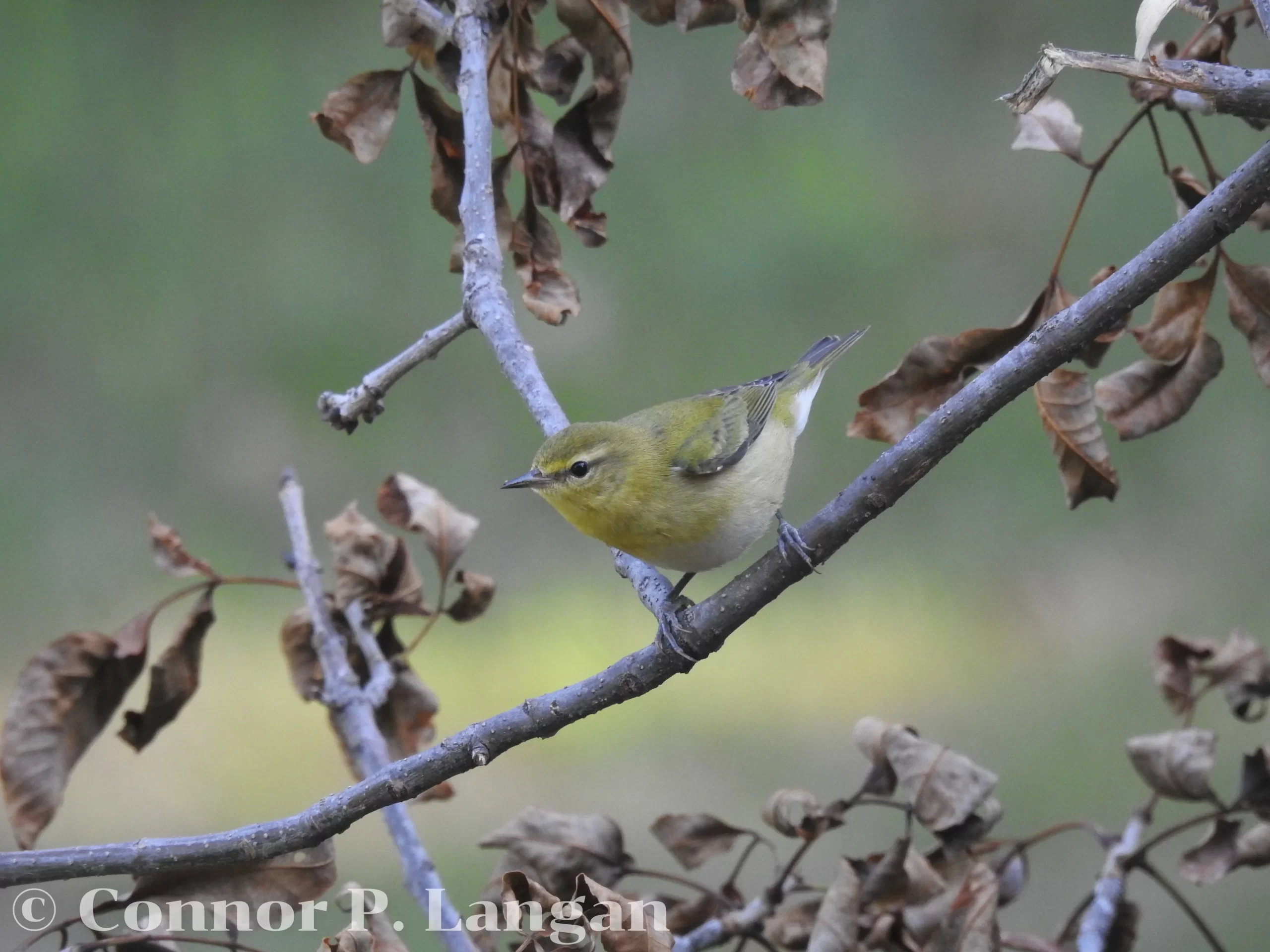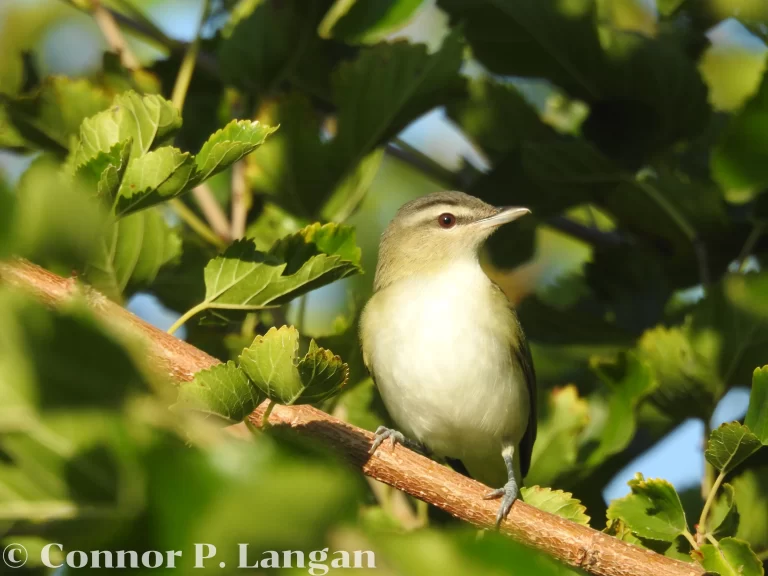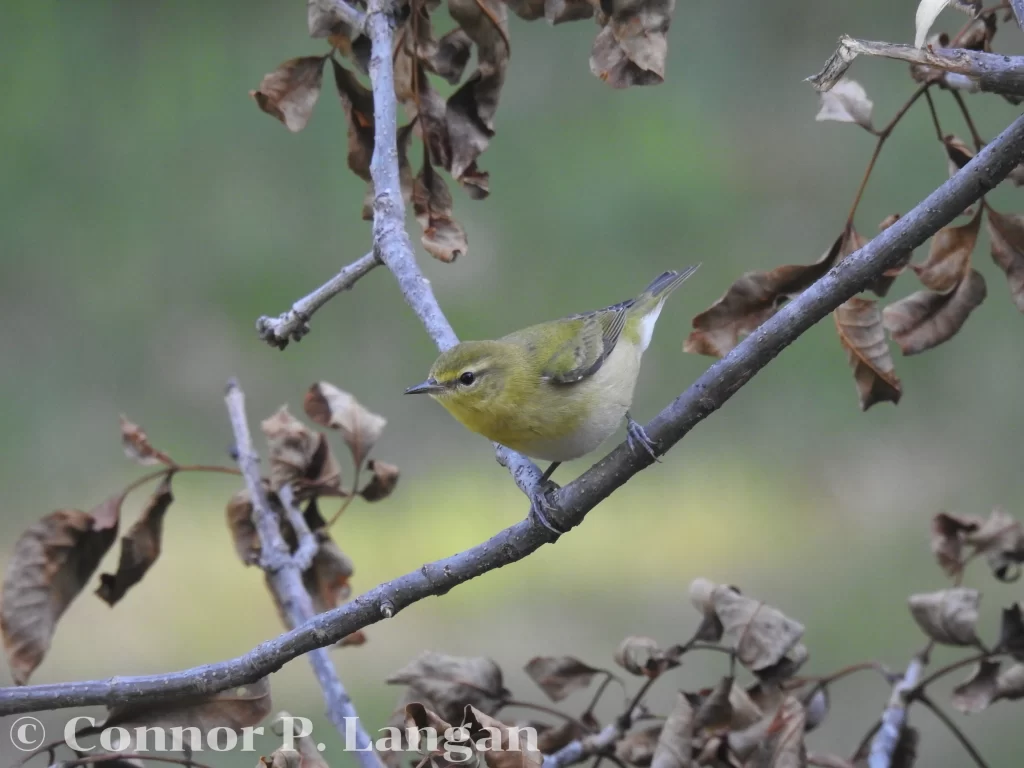Description
Tennessee Warblers are tiny, chunky warblers that have short tails and slim, pointed bills.
These songbirds can measure anywhere from 4 to 5 inches, while they weigh 0.3 ounces.
Tennessee Warblers can be variable in their plumage coloration. All Tennessee Warblers have pale undertail coverts, pale supercilia, faint lines that go through their eyes, and wings that lack wingbars.
Males in breeding plumage have contrasting green backs and pale undersides with gray caps.
Females in breeding plumage are a mix of yellow and green colors. They’ve got pale yellow throats and undersides and green backs and caps.
Tennessee Warblers in nonbreeding plumage have uniformly-colored backs and heads with yellowish-green undersides.
Immature Tennessee Warblers tend to have more vibrant yellow coloration in their plumage. Their undersides may be bright yellowish-green, while their backs are light green.
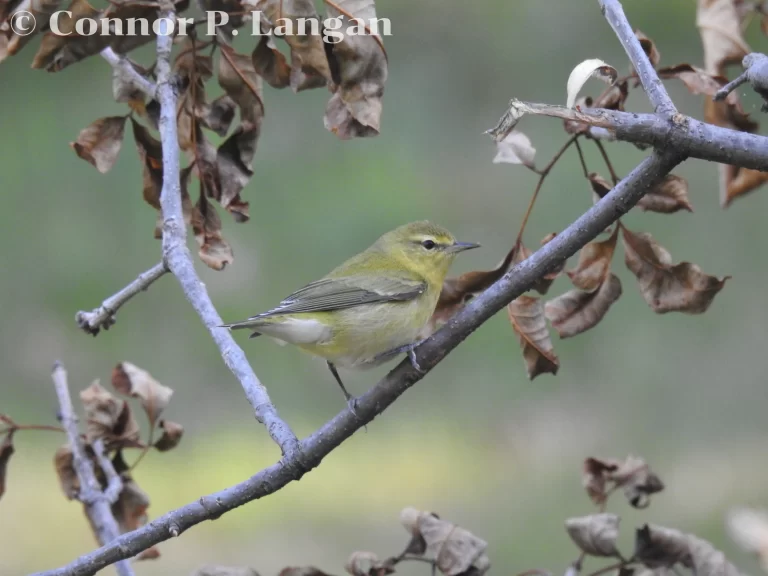
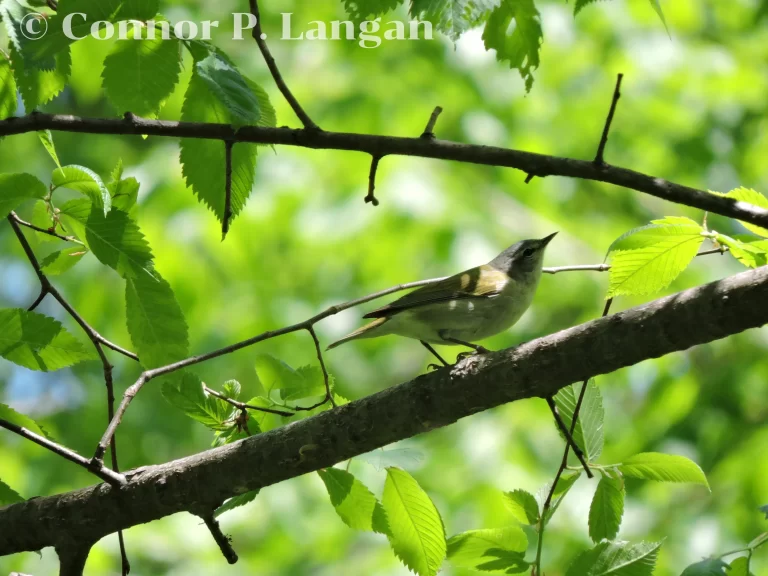
Behavior
Tennessee Warblers are lively birds that forage towards the tops of trees. Males sing persistently and defend their territories from intruders.
This species enjoys foraging in mixed-species flocks during the nonbreeding season.
Diet
Insects make up the bulk of a Tennessee Warbler’s diet. These warblers are major predators of spruce budworms, with these insects often being the primary food source for these birds in years of population booms.
Although these birds primarily consume fruit and nectar during the breeding season, they incorporate fruit and nectar into their diets during migration and winter.
Habitat
The boreal forests of Canada and the Northern United States are where Tennessee Warblers spend the summer breeding months. They nest in either coniferous or mixed forests, avoiding forests that are primarily deciduous. An optimal breeding location will have a healthy understory that is filled with shrubs.
Watch for Tennessee Warblers to appear in any areas with substantial tree cover during migration. Such locations include residential neighborhoods, parks, shelterbelts, cemeteries, woodlots, and forests. Tennessee Warblers winter in wooded locations such as coffee plantations, fruit orchards, and rainforests.
Range
This warbler spends its summers in the boreal forests of Canada, the upper Midwest, and the Northeast. Tennessee Warblers winter in the Caribbean, Mexico, Central America, and northern South America.
Breeding
Pairs of Tennessee Warblers are monogamous during the breeding season, but they typically find new mates during the following year.
Although Tennessee Warblers forage in the canopies of forests, these birds construct their nests on the ground. It is thought that the female selects the nesting site and constructs the nest with little assistance from the male.
Tennessee Warblers build cup-shaped nests out of grasses and other plant fibers. The interior of the nest is lined with soft materials such as lichens, hair, or feathers. Nests are exceptionally well-hidden.
Females typically produce a single brood of eggs and manage the incubation duties alone. Each clutch of eggs contains as many as 6 eggs, and males deliver food to females sitting on the nest. Eggs hatch in about 12 days, and young leave the nest another 12 days later.
Backyard Birding
Though Tennessee Warblers may consume fruits and nectar during migration, it would be surprising if one of these birds appeared at your bird feeders. Tennessee Warblers do not nest in birdhouses, but they may bathe in bird baths.
You may be able to host Tennessee Warblers during migration if your yard has plenty of trees and shrubs in which they can forage.
Population Status
It is difficult to gauge the population trends of Tennessee Warblers given their remote breeding range. However, their total population is believed to exceed 100 million birds.
Tennessee Warbler populations rise and fall in correspondence to spruce budworm populations. These birds have a massive breeding range and wintering range, which bodes well for their future prosperity.
Similar Species
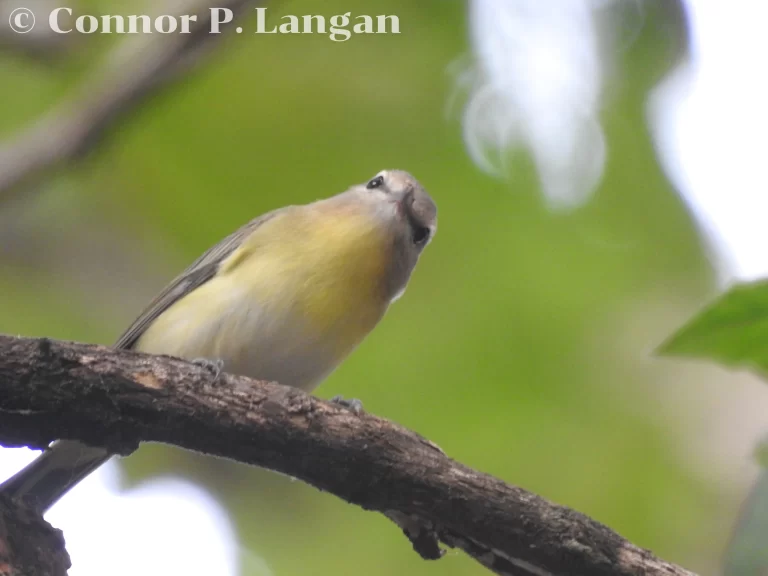
Philadelphia Vireo

